Hi Everyone,
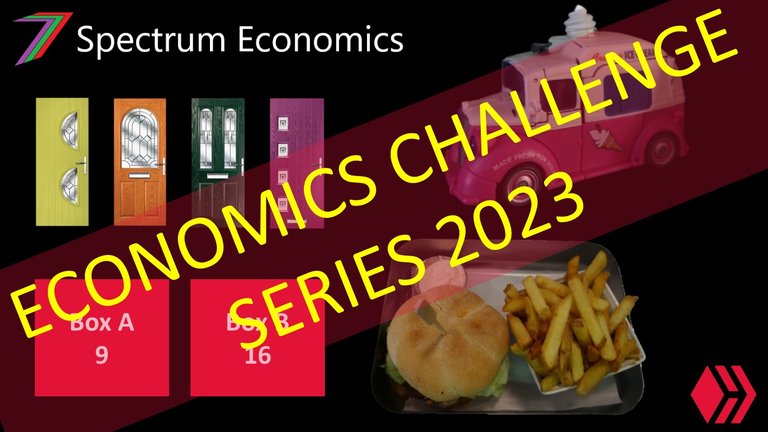
The Economics Challenge Series begins this month. The challenge series will last for two months (July and August). This year's challenge series will consist of 7 unique challenges. All the challenges are linked to economic theory and/or the application of it. Some of these challenges are returning from last year’s challenge series, some are from the monthly contest series, and one is completely new. All challenges will begin in July. Each challenge will run for about one week. The results of the challenges will only be announced once the seventh challenge has closed. The results of two challenges per a week will be announced in August. At the end of August, the overall challenge series winner will be announced.
The Challenges
Below are the names of the challenges and the order they will commence.
- Buying and Selling Game
- Pick-a-Door
- Complements and Substitutes
- Buying and Selling Game (Business Version)
- Ice Cream Game
- Game Theory Game
- Even-to-Win
Below are brief descriptions of each challenge.
Buying and Selling Game
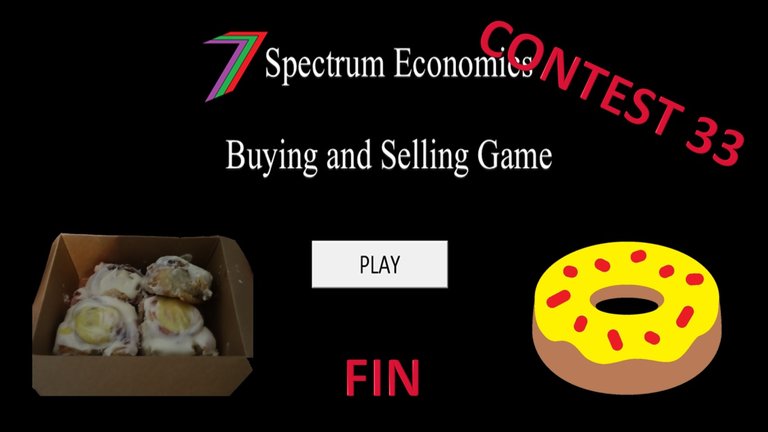
In this challenge, participants are required to buy goods with an allocated amount of money. They are given a choice of 6 goods and all these goods are available in any of the 5 towns or cities in the game. The buying prices of all goods are provided in the question.
The participants are then required to sell all of their goods on a future date. The selling prices for all goods in all towns or cities are not provided. Instead, the question provides a triangle distribution for the selling price of each good in each town or city. For the triangle distribution, the minimum, maximum, and mode values are provided.
The participant who has the highest profit after selling all his or her goods is the winner.
Read this post for more information.
Pick-a-Door
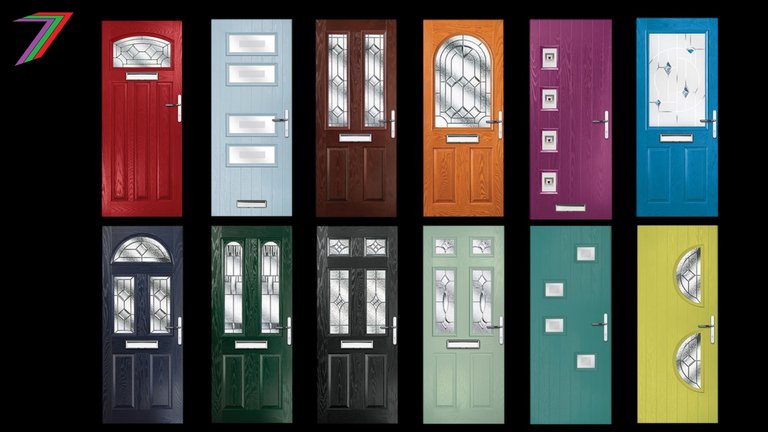
In this challenge, participants are required to make decisions based on expected payoff and risk. Participants are presented with 12 doors. Behind each door there could be a prize (expressed in dollars). Each door has a possible prize worth a different amount. As the value increases the probability of the prize being behind the door decreases. For example, Door 3 might have an 85% chance of a prize worth $30 and Door 7 might have a 30% chance of a prize worth $100. If the prize is not there, the participant will receive a value of zero.
Opening a door incurs a cost, each participant is given a budget. Therefore, each participant can only open as many doors as their budget permits. Participants are not compelled to use all of the budget. If a participant opens 2 or more doors that have zero value behind them, they are eliminated from the challenge. If not eliminated, the winner is the participant with the highest total value expressed in dollars (i.e. combined value of prizes minus cost of opening doors).
Read this post for more information.
Complements and Substitutes (NEW)
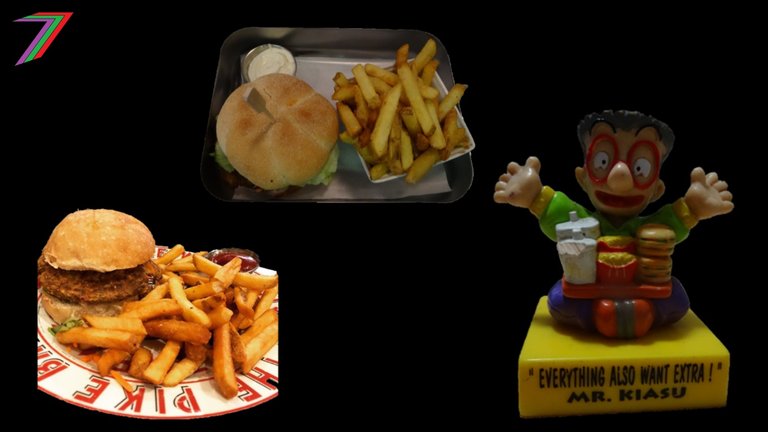
In this challenge, participants are required to price three food items sold at the same store. For this challenge, the three food items are burgers, hot dogs, and fries. Burger and hot dogs are assumed to be substitutes for each other and fries are assumed to be complementary to both burgers and hot dogs. If the food items are substitutes, they are in competition with each other. If a person buys a hot dog they are assumed less likely to buy a burger. If food items are complementary, buying one encourages the buying of the other. We assume fries are treated as a side to accompany a burger or hot dog. However, many people may still wish to buy just one on its own. Therefore, they are not perfectly complementary.
The participants are required to set the prices of burgers, hot dogs, and fries. The aim is maximise total profits. Participants are provide with variable costs and inverse demand functions for the food items. There are no fixed costs and participants are not required to work with a budget. For this question, no information is required to be generated by any model .
The winner is the participant with the highest profit. If two participants obtain the same profit, the participant who entered first wins.
No additional information.
Buying and Selling Game (Business Version)
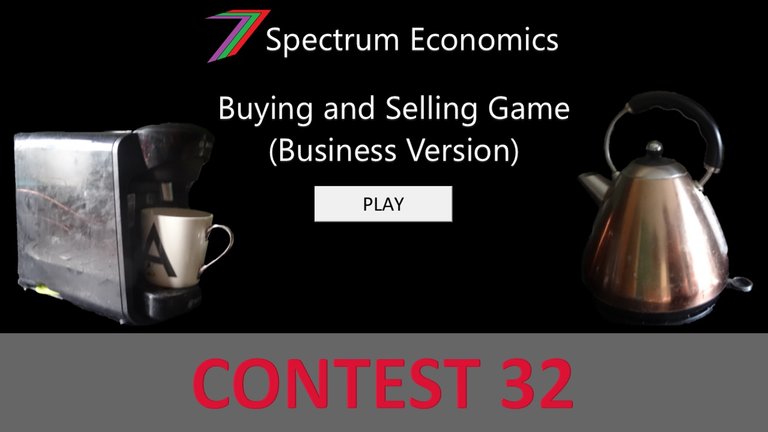
In this challenge, the participants are required to buy or produce goods with an allocated budget. They are given a choice of three types of goods to buy or produce. They are required to buy or produce these goods in combinations specified in the question. The participants are required to set the prices of the goods they have bought or produced. All costs are provided in the question. However, demand for each good is not provided.
The demand for the goods are determined using an Excel Model using triangle distributions. The participants are informed of the minimum, maximum, and mode values used to determine these distributions. The Excel Model uses the calculated demand and prices entered by the participants to calculate the number of goods sold. The prices, costs, quantities bought or produced, and quantities sold are used to determine the profit for each participant.
The participant with the highest profit after selling his or her goods is the winner.
Read this post for more information.
Ice Cream Game
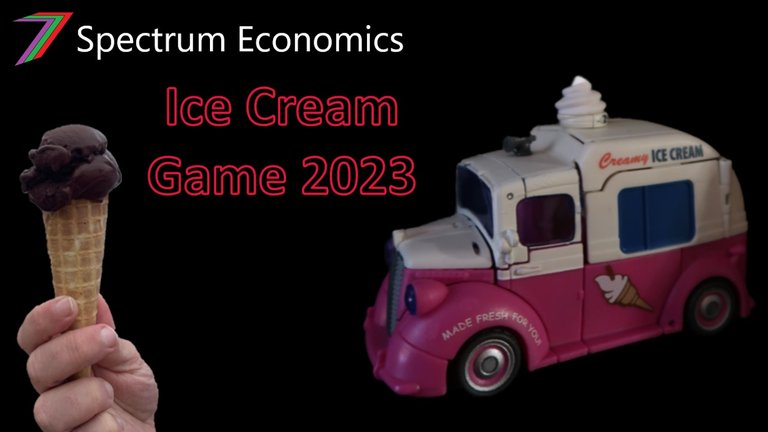
In this challenge, the participants are required to select a beach and then a location on that beach to set-up an ice cream stand. The stand attracts customers based on its proximity to customers. The stand can only attract customers that do not need to pass another ice cream stand (competitor) to reach it. The ice creams sold by each stand are identical. Therefore, participants cannot compete on price or quality of product.
The objective of the game is to obtain the most customers. If two participants obtain the same number of customers, the participant who entered first wins.
Read this post for more information.
Game Theory Game
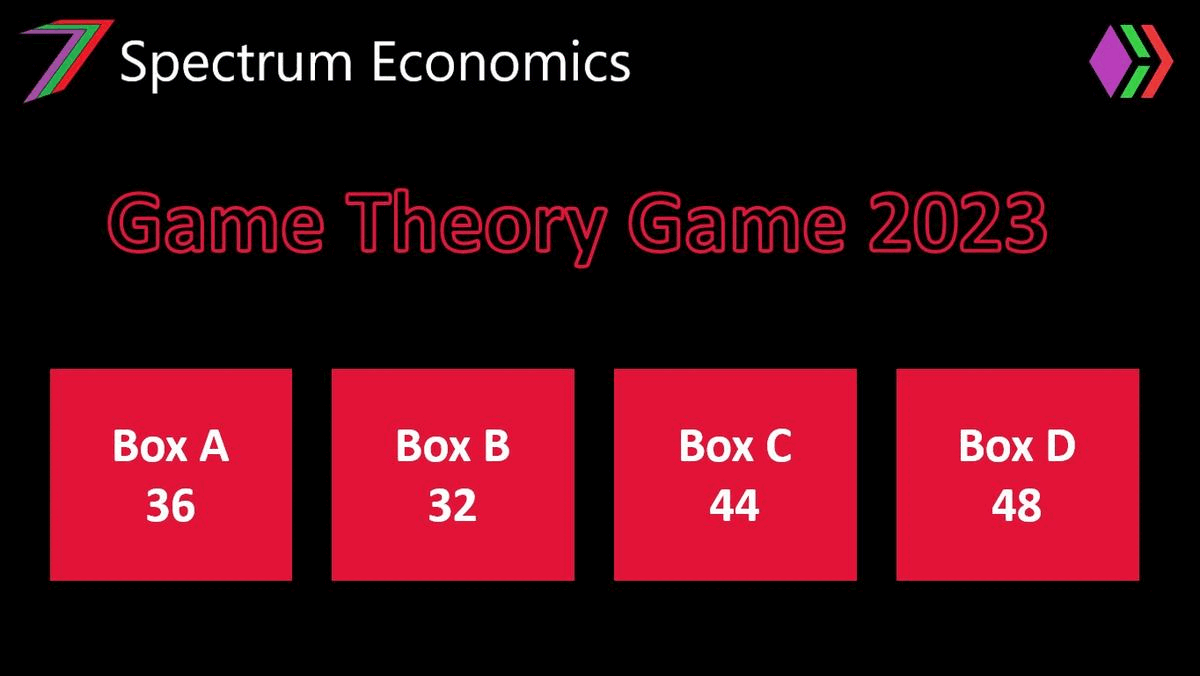
In the challenge, the participants are required to choose 6 out of 11 boxes. Each box is assigned a value. The value of the box is equally shared amongst the participants who selected it (e.g. if a box has a value of 40 and 8 participants select that box, each participant obtains a value of 5). The sum of the values of the selected boxes, after being adjusted for sharing, will be the participant's score.
This contest has several win conditions. These conditions are as follows:
- The participant who obtains the highest value wins the contest if no other participants obtain that same value.
- If more than one participant shares the highest value, the participant with the lowest value wins if no other participants obtain that same value.
- If more than one participant shares the highest value and if more than one participant shares the lowest value, the first and second participants to enter the contest will be joint winners of the contest and will share the prize equally. This will occur regardless of the value they obtained from the boxes.
Read this post for more information.
Even-to-Win
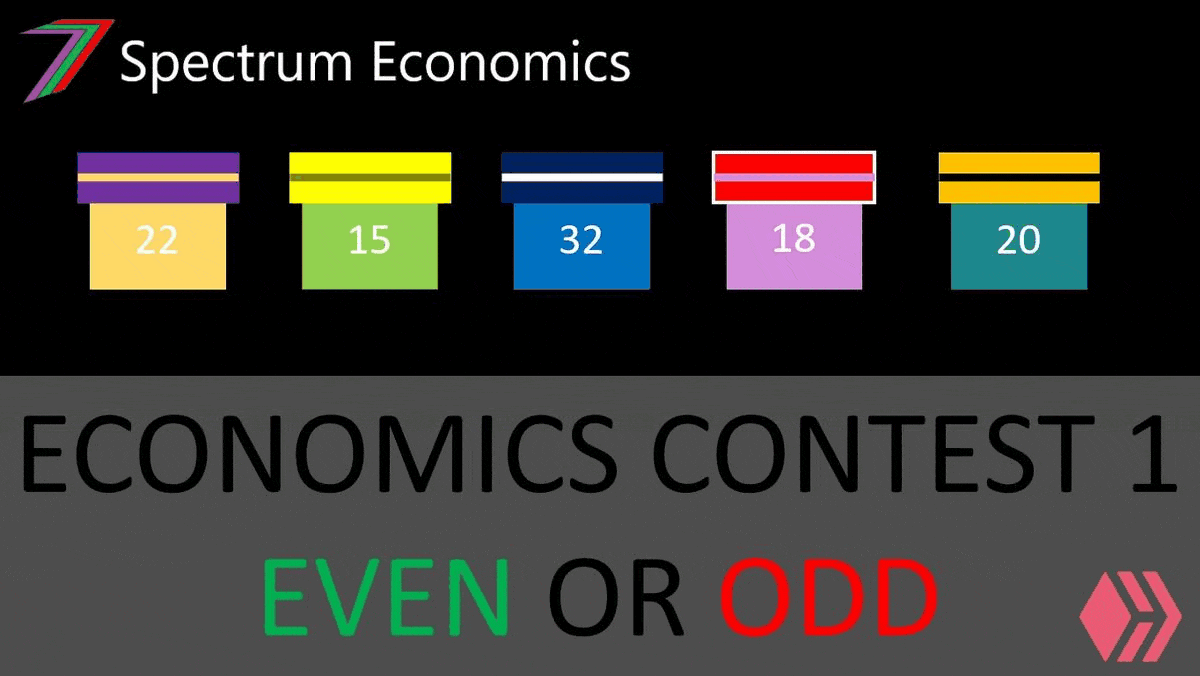
In this challenge, the participants are required to select a certain number of boxes (e.g. 6 out of 11 boxes). Each box has been assigned a value. The participant obtains that value if an even number of participants have selected that box. If only one participant selects the box, it does not award that value. If two participants select it, it offers the value stated in the question. If three participants select the box, it does not award that value. Some boxes have limits to the number of participants that can select them. For example, a box might have a limit of three participants. Once the third participant has selected the box, new participants can no longer select that box. Any new selections of the boxes once they have reached their limit will not be considered in determining the participant’s total value. However, their remaining selections will still be considered.
The objective of the game is to obtain the highest combined value from the boxes selected. If two participants obtain the same value, the participant who entered first wins.
Read this post for more information.
Prizes
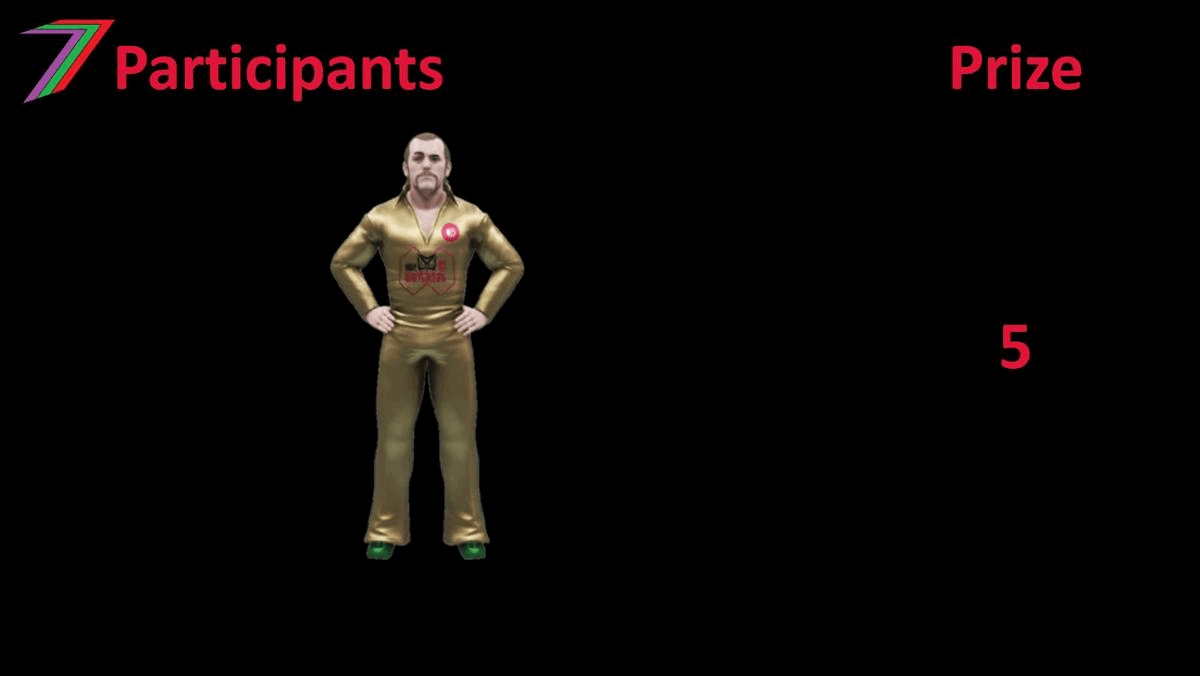
The value of the prize will depend on participation. As the number of participants increase, so does the value of the prize (see GIF above). For each new participant, the prize for the challenge will increase by 5 Hive Power. This will occur until the prize reaches a maximum of 60 Hive Power for the challenge. For example, if there are 5 participants, the prize will be 25 Hive Power (5 × 5). If there are 10 participants, the prize will be 50 Hive Power (10 × 5). If there are 12 or more participants, the prize will be 60 Hive Power. For some challenges, the prize will be awarded to just the winner and for other challenges it will be awarded as 2/3 to the winner and 1/3 to second place.
In addition to prize rewards, points will be awarded to the top performers of each challenge. The participant with the most points at the end of the Challenge Series will be the overall winner. The prize for the overall winner will depend on total participation across all 7 challenges. For each participant, the prize will increase by 1 Hive Power. This will occur until the prize reaches a maximum of 80 Hive Power. For example, if challenges 1 to 7 have 8, 7, 8, 6, 12, 10, and 14 participants respectively, the prize for the overall winner will be 65 Hive (8+7+8+6+12+10+14=62). If the participation rate is high, in total for the entire series, as much as 500 Hive Power (7 × 60 + 80 = 500) could be given away.
I hope everyone enjoys the challenge series. The first challenge will begin in under a week. Look out for it.
More posts

I have several collection of posts. I have organised these collections based on content and purpose.
The first collection contains six collection posts created before PeakD had the collection feature. Four of these posts relate to the core of my content, one of them contains all my Actifit Posts, and one of the them contains my video course ‘Economics is Everyone’.

The second collection consists of the posts that I consider define my channel. These posts are significant in terms of content as well as how they contribute to the growth of the channel. These posts reveal the most about what I believe in.

The third and fourth collection is what I call my ‘Freedom-base Economics living book’. They contain all the posts that support my ideas about the value and power of freedom. Some of these posts explain what we can achieve with freedom and what we need to utilise it. Some of them explain how we are deprived of freedom and how we often give up freedom for security and comfort. The third collection concludes with possible scenarios depending on what we (society) choose to do.


Hive: Future of Social Media

Spectrumecons on the Hive blockchain
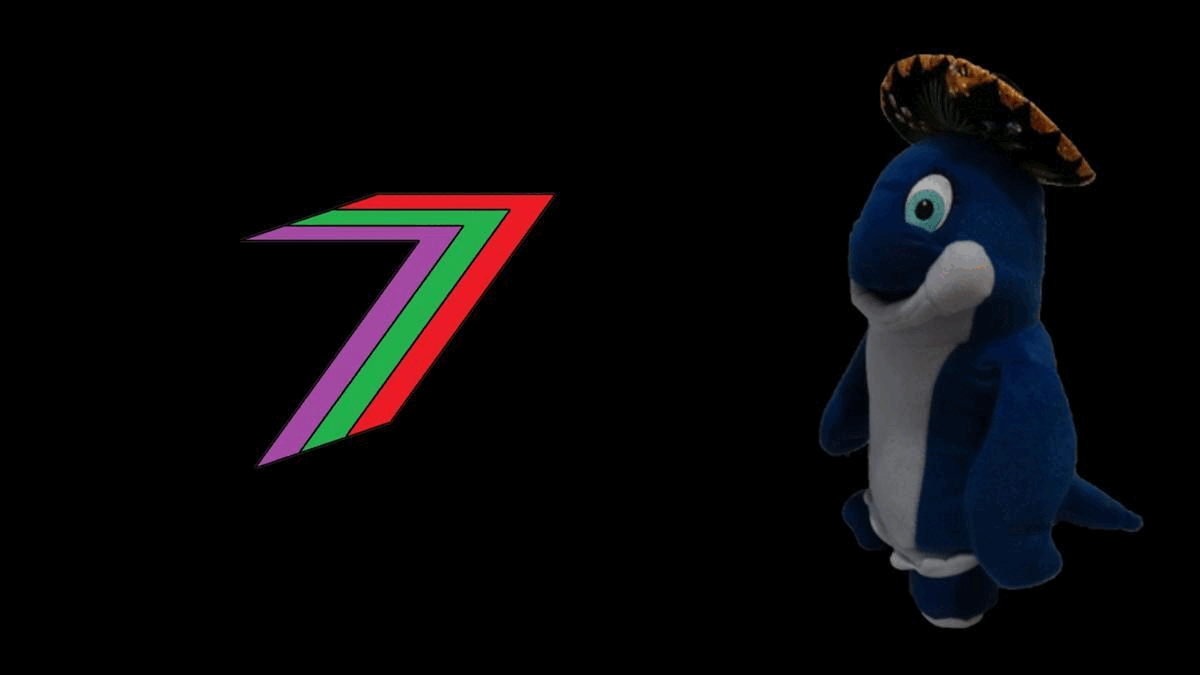
The contest is really going to be amazing and I can't wait to be part of it.
Awesome, I look forward to your participation.
This is really great to hear and I am looking forward to participating in the contest
Cool, I look forward to you participating.
Discord Server.This post has been manually curated by @steemflow from Indiaunited community. Join us on our
Do you know that you can earn a passive income by delegating to @indiaunited. We share more than 100 % of the curation rewards with the delegators in the form of IUC tokens. HP delegators and IUC token holders also get upto 20% additional vote weight.
Here are some handy links for delegations: 100HP, 250HP, 500HP, 1000HP.
100% of the rewards from this comment goes to the curator for their manual curation efforts. Please encourage the curator @steemflow by upvoting this comment and support the community by voting the posts made by @indiaunited.
Can't wait for the contest to start
It will soon.
This is new to me.
It's a bit different from the other contests on Hive.
Congratulations @spectrumecons! You have completed the following achievement on the Hive blockchain And have been rewarded with New badge(s)
Your next target is to reach 89000 upvotes.
You can view your badges on your board and compare yourself to others in the Ranking
If you no longer want to receive notifications, reply to this comment with the word
STOPCheck out our last posts: